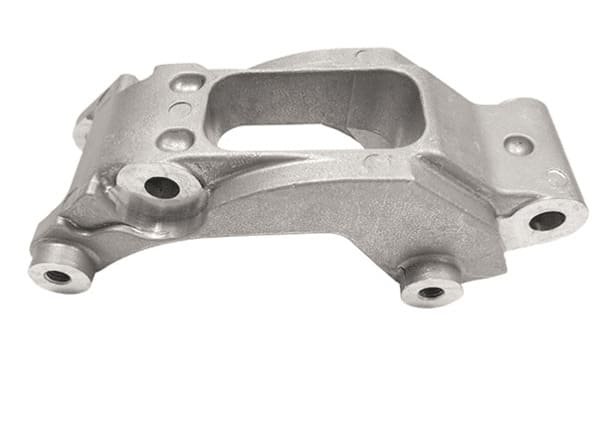Comparative Analysis: Die Cast Aluminum vs. Other Metals
Introduction
Welcome to the fascinating world of die casting, where metals aren’t just heated and poured but are transformed with precision and artistry. Think of die casting as the metal world’s version of a high-pressure cooking show – metals like aluminum, zinc, and magnesium are the main ingredients, each bringing their unique flavors to the table. Aluminum, the star of our show, is like the versatile chef, ready to tackle any recipe with ease. But what about the other metals? In this comparative analysis, we’ll dive into the melting pot of die casting, pitting die cast aluminum against its metallic counterparts. It’s a clash of the titans, but in a world where precision and strength are kings. Let’s turn up the heat and see how these metals measure up in the die casting arena!
Overview of Die Cast Aluminum
Aluminum, in the world of die casting, is like the Swiss Army knife – versatile, lightweight, and exceptionally user-friendly. With its low melting point, aluminum flows into molds as smoothly as a chocolate syrup, making it ideal for capturing complex shapes and fine details. Its strength-to-weight ratio is akin to a featherweight boxer packing a heavyweight punch, perfect for applications where strength is crucial but heaviness is a no-go. This metal isn’t just strong and nimble; it also boasts excellent corrosion resistance, ensuring that products don’t just perform well, but also last long. From aircraft parts that touch the sky to tiny components in your smartphones, die cast aluminum is everywhere, proving that sometimes, the best things in life are indeed light.

Other Common Metals in Die Casting
Aside from aluminum, the die casting stage features a cast of versatile metals, each with its unique strengths and applications. Let’s spotlight some key players:
Titanium: The elite athlete of metals. Known for its extraordinary strength and lightweight, titanium is like the high-performance sports car of metals. It’s highly resistant to corrosion and can withstand extreme temperatures, making it a go-to for aerospace and medical applications. However, its higher melting point and processing requirements make it a more complex choice for die casting.
Zinc: The versatile all-rounder. Zinc is the unsung hero in die casting, offering excellent ductility and impact strength. Its lower melting point allows for longer mold life and more intricate designs, making it ideal for detailed components like gears or decorative items. Plus, its superior casting fluidity ensures top-notch dimensional accuracy.
High-Temperature Alloys: The endurance runners. Designed to perform under extreme conditions, these alloys are the choice for applications that involve high temperatures and stresses, such as in jet engines or industrial machinery. They maintain structural integrity where other metals would falter, thanks to their resistance to thermal fatigue and creep.
Steel: The dependable workhorse. Steel in die casting is known for its high strength and durability. It’s the traditional pick for heavy-duty applications like automotive and construction. While not as lightweight as aluminum or titanium, steel’s robustness and ability to handle substantial stress make it a reliable contender in the die casting world.
Each of these metals brings its unique set of properties to the table, making the choice a strategic decision based on the specific demands of the application. In die casting, it’s not just about molding metal; it’s about crafting solutions.
Metals in Die Casting: A Comparative Overview
To encapsulate the distinct characteristics and applications of various metals used in die casting, we present a comprehensive comparison. This table will highlight the differences in strength, weight, ease of use, cost, and availability, offering a clear perspective on why certain metals are chosen for specific applications.
Comparative Table:
| Metal | Strength and Durability | Weight | Ease of Use | Cost | Availability |
| Aluminum | High strength-to-weight ratio; excellent corrosion resistance | Lightweight | High; excellent for detailed and complex designs | Moderate; cost-effective | High; widely available |
| Titanium | Extraordinary strength; highly durable; excellent for extreme conditions | Lightweight but strong | Moderate; higher melting point and processing requirements | High; premium metal | Moderate; less available |
| Zinc | Adequate durability; excellent ductility and impact strength | Heavier than aluminum but lighter than steel | High; good for intricate designs | Low; very cost-effective | High; widely available |
| Steel | Very high strength and durability | Heavy | Moderate; robust for heavy-duty applications | Moderate; widely used | High; widely available |
| High-Temperature Alloys | Exceptional performance under extreme temperatures; retains strength at high heat | Varies with alloy type | Specialized; used for demanding applications | High; specialized use | Moderate; specialized |
Future Trends and Innovations
The future of die casting is poised for transformative changes with emerging trends and innovations. We’re witnessing a shift towards more sustainable and efficient practices, including the use of recycled materials and advancements in energy-saving technologies. Additive manufacturing (3D printing) is set to revolutionize mold-making, allowing for even more complex and precise designs. Furthermore, the integration of AI and machine learning in the die casting process could lead to more intelligent and optimized production, potentially shifting preferences towards materials that align with these technological advancements.
Conclusion
In conclusion, this comparative analysis underscores the unique attributes and applications of various metals used in die casting. Selecting the right metal for a specific application is not just a matter of matching physical properties; it’s about understanding the broader implications including cost, availability, and the potential for innovation. As the industry continues to evolve, it’s imperative to explore and embrace new technologies and materials. The future of die casting is rich with possibilities, beckoning industry professionals to delve deeper, innovate, and continuously strive for excellence in meeting the diverse and dynamic demands of modern manufacturing.





